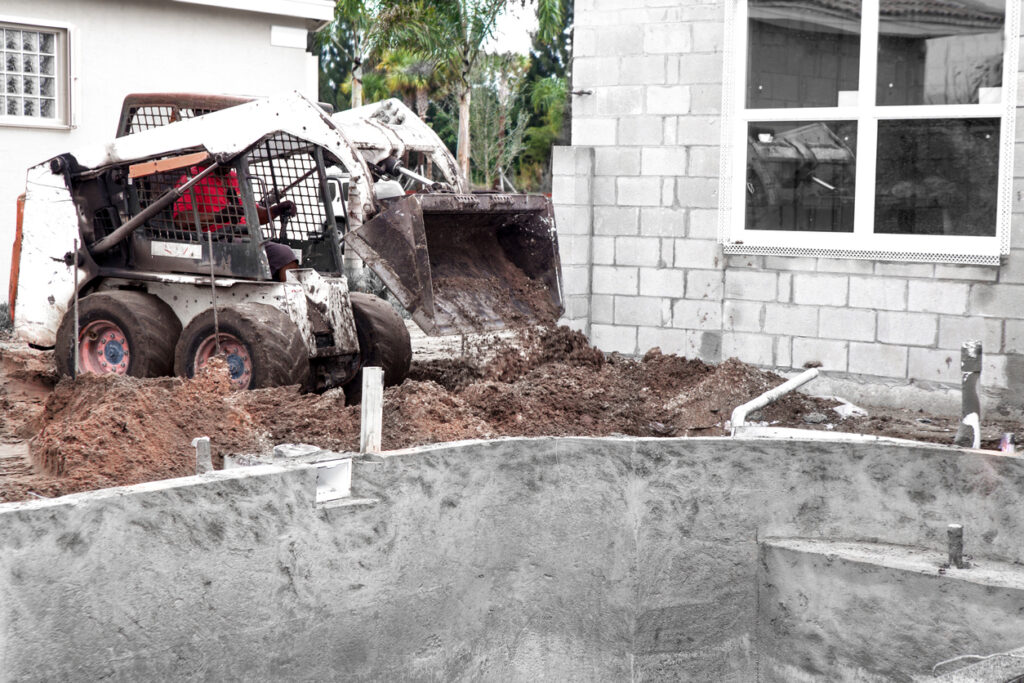6 Common Local Code Ordinances Surrounding Swimming Pool Fill Projects
Kevin McLaughlin
Customers pay $4,000-$16,000 on average to fill in an inground swimming pool, and after costs, this can add up to a sizeable profit for contractors. Knowing what kind of dirt can be used for backfill and understanding the process requirements can help you secure a more significant piece of this market.
While ordinances may vary depending on regional and state requirements, we’ve compiled 6 common local ordinances for swimming pool fill projects to help you land more contracts.

6 Common Local Code Ordinances for Swimming Pool Fill Projects
1. Permits are Often (Though Not Always) Required
Many cities and municipalities require contractors to obtain a demolition or building permit. It may be free or can cost upwards of several hundred dollars. Sometimes permits are only required if a pool reaches a certain depth. Sewer or other utility disconnect permits are also common for these types of projects.
2. Soil Compaction is Tested
In order to ensure that the soil is safe to build new structures on, ordinances often require an independent soil compaction test for backfilled pools, especially those built on a grade. This can add to the cost of the job due to inspection and testing fees. Typically the compaction requirement is a minimum density of 90 to match with American Standard Testing Method (ASTM) guidelines.
3. Inspections are the Norm
Almost every city and municipality requires an inspection, although the types may vary. Often they’re done to ensure proper structural backfill of the site, and they may also include drainage inspections for partial demolitions. Pre-inspections are also commonly required in order to determine the type of permit to issue and the requirements for the job.
4. Requirements for Partial and Complete Demolition Differ
Partial demolition requirements allow the top several inches of the pool’s shell to be used to fill in the pool’s bottom. Drainage holes are always required for this type of backfill, and their drilling standards are typically very detailed.
With complete demolition jobs, the whole shell must be removed, and the entire hole must be filled in with gravel and/or soil. Some municipalities only allow complete demolitions of swimming pools.
5. Gravel and Clean Soil Top the Backfill Requirement List
Though not always stated, Class 2 backfill is the most common type of soil mentioned in ordinances. Many areas allow contractors to use gravel and sand granular fill or clean fill. The type of backfill varies slightly depending on the area of the country. For example, gravel fills tend to be required in areas that need more drainage, such as in floodplains.
DirtMatch ProTip: To determine the amount of soil you’ll need, check out our article How to Effectively Estimate the Fill Dirt You’ll Need for Different Projects. You’ll find tips and tricks for quickly calculating your project.
6. Keeping Soil and Debris Contained is Key
Since many swimming pool backfill jobs take place in residential neighborhoods, ordinances often include requirements to keep streets, pathways, and other common areas free from dirt and debris. In addition, fines may be levied if you fail to properly inspect equipment and excessive fumes, gas, or other odors escape. Temporary enclosures can help mitigate your risk of having unexpected neighborhood complaints turn into costly fees.
Ready to save time, trucking costs, and money on your swimming pool fill projects? We work by cutting out the middle man – the trucking delivery company – in order to help save you thousands of dollars. Sign up for a DirtMatch account today to connect directly with construction professionals in your area who have the backfill you need for your next swimming pool project.